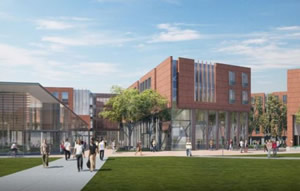Plans Move Forward on Cornell University Housing Complex
 Plans for a new dormitory complex at Cornell University in Ithaca, NY, moved forward recently. The proposed complex would house around 2,000 students and allow for older dorms on campus to undergo needed maintenance.
Plans for a new dormitory complex at Cornell University in Ithaca, NY, moved forward recently. The proposed complex would house around 2,000 students and allow for older dorms on campus to undergo needed maintenance.
The complex would consist of two distinct living areas for students. The proposed sophomore dorms on the northern part of the campus would add 1,200 beds and a new dining hall. The first-year dorms would be constructed on the western portion of the campus and provide an additional 800 beds.
The city of Ithaca is working with Cornell on the project, serving as leaders of environmental review.